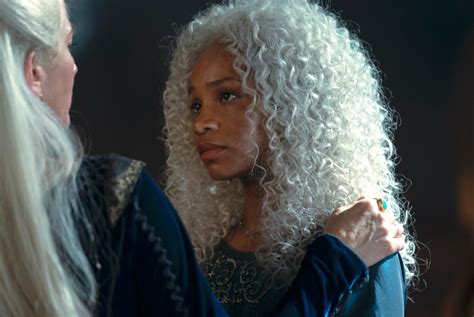Guitar legend Jorma Kaukonen, 81, had concertgoers roaring with laughter recently after sharing the hilarious backstory behind Hot Tuna’s iconic 1960s hit, “Funky #7,” during a performance at The Kate in Old Saybrook, Connecticut. Kaukonen revealed the song’s unexpected origins, which involved a miscommunication with bassist Jack Casady and a series of improvised musical choices, transforming what could have been a rehearsal blunder into a blues-rock classic.
Jorma Kaukonen, the celebrated guitarist best known for his work with Jefferson Airplane and Hot Tuna, captivated an audience in Connecticut not only with his masterful musicianship but also with a self-deprecating and humorous anecdote about the creation of one of his band’s most recognizable tunes. The revelation occurred during a recent performance at The Katharine Hepburn Cultural Arts Center, affectionately known as The Kate, located in Old Saybrook.
Kaukonen, who has been a prominent figure in the American rock and blues scene for over five decades, took a moment between songs to delve into the history of “Funky #7,” a Hot Tuna staple that has become synonymous with the band’s signature blend of blues, rock, and improvisational prowess. The song, instantly recognizable for its driving rhythm and Kaukonen’s intricate guitar work, has long been a fan favorite. However, few knew the comical circumstances that led to its creation.
“We were rehearsing one day, and Jack [Casady] wasn’t there,” Kaukonen began, setting the stage for his story. Casady, the bassist and Kaukonen’s longtime musical partner, was apparently running late, leaving Kaukonen to start the session without him. In an effort to make productive use of the time, Kaukonen decided to work on a new riff. “So I started playing this little thing, just fooling around,” he explained.
When Casady finally arrived, he immediately jumped in, assuming the riff was a fully formed song. “Jack walks in, picks up his bass, and starts playing along,” Kaukonen recounted. The problem? Casady was playing in a completely different key. Instead of correcting his bandmate, Kaukonen decided to roll with it. “I thought, ‘Well, this is interesting.’ So I just kept playing in my key, and he kept playing in his key.”
The resulting musical clash, rather than being a disaster, turned out to be surprisingly compelling. The tension between Kaukonen’s guitar and Casady’s bass created a unique and intriguing sound that neither musician had anticipated. “It sounded terrible, but in a good way,” Kaukonen quipped, drawing laughter from the audience.
It was this happy accident that birthed “Funky #7.” The title itself is a testament to the song’s improvisational origins. As Kaukonen explained, the “Funky” part was simply a descriptor for the song’s unusual sound, while the “#7” referred to the chord progression Kaukonen was using. The combination of the two created a name that was both descriptive and memorable.
The story behind “Funky #7” highlights the importance of spontaneity and collaboration in music. What started as a simple rehearsal exercise quickly evolved into a full-fledged song, thanks to the willingness of Kaukonen and Casady to embrace the unexpected. It also demonstrates the unique chemistry between the two musicians, who have been playing together for over 50 years. Their ability to instinctively understand and respond to each other’s musical ideas has been a key ingredient in Hot Tuna’s enduring success.
The performance at The Kate was part of Kaukonen’s ongoing solo tour, which sees him performing both acoustic and electric sets. The shows typically feature a mix of original songs, classic blues covers, and Jefferson Airplane favorites. Kaukonen’s storytelling, like the anecdote about “Funky #7,” has become an integral part of his live performances, adding an extra layer of depth and engagement for his audience.
Throughout his career, Jorma Kaukonen has earned a reputation as one of the most respected and influential guitarists in rock and blues. His distinctive fingerpicking style, his deep understanding of blues tradition, and his willingness to experiment with new sounds have all contributed to his lasting legacy. He has released numerous solo albums, toured extensively with Hot Tuna, and been inducted into the Rock and Roll Hall of Fame as a member of Jefferson Airplane.
Kaukonen’s ability to connect with his audience on a personal level is one of the reasons why he remains a popular performer after all these years. Whether he’s sharing a funny story about the creation of a song or delivering a blistering guitar solo, Kaukonen has a way of making his audience feel like they’re part of something special. His recent performance at The Kate was no exception, leaving the audience entertained, informed, and thoroughly impressed by the guitar legend’s enduring talent and wit.
The story of “Funky #7” serves as a reminder that sometimes the best things in life come from unexpected places. It’s a testament to the power of improvisation, the importance of collaboration, and the enduring magic of music. And it’s a story that Jorma Kaukonen will likely continue to share with audiences for years to come, ensuring that the legacy of “Funky #7” lives on.
The revelation about the song’s origin provides an interesting insight into the creative process and the often-unpredictable nature of music creation. It humanizes the artists and underscores the notion that not every great song is meticulously planned; some are born from serendipitous moments. Kaukonen’s willingness to share this anecdote adds a personal touch to his performances, making the experience more engaging and memorable for his fans.
Kaukonen’s career spans several decades, marked by innovation and a deep appreciation for musical traditions. From his early days with Jefferson Airplane, contributing to the psychedelic rock movement, to his enduring work with Hot Tuna, exploring blues and folk idioms, Kaukonen has remained a vital force in American music. His dedication to his craft and his willingness to experiment have earned him the respect of fellow musicians and the admiration of fans worldwide.
The setting for Kaukonen’s performance, The Kate, is a fitting venue for such an intimate and engaging show. Named after the legendary actress Katharine Hepburn, who spent much of her life in Old Saybrook, the cultural arts center is a hub for music, theater, and film, providing a platform for artists of all kinds to share their work with the community. The venue’s intimate setting allows for a close connection between performers and audience members, making it an ideal space for storytelling and musical exploration.
The enduring appeal of Jorma Kaukonen lies not only in his musical talent but also in his authenticity and his ability to connect with people on a personal level. He is a storyteller, a musician, and a cultural icon, all rolled into one. His recent performance at The Kate was a testament to his enduring legacy and his continued relevance in the world of music. The laughter and applause that filled the theater that night were a clear indication that Jorma Kaukonen’s music and his stories continue to resonate with audiences of all ages.
Kaukonen’s anecdote underscores the sometimes-unintentional pathways to musical innovation. It highlights how embracing mistakes or divergences from the planned path can lead to unexpected and creative outcomes. In a world where perfection is often pursued relentlessly, Kaukonen’s story is a refreshing reminder of the beauty and value of improvisation and spontaneity.
The story of “Funky #7” resonates beyond its musical origins, offering insights into collaboration and adaptation. The ability of Kaukonen and Casady to find a harmonious path despite initially playing in different keys speaks to their deep musical understanding and their capacity to adapt to unforeseen circumstances. It’s a valuable lesson that extends beyond music, illustrating the power of collaboration and the potential for creating something unique and innovative by embracing unexpected challenges.
Jorma Kaukonen’s continued presence on the music scene is a testament to his enduring talent and adaptability. He has successfully navigated the changing landscape of the music industry, maintaining his relevance and connection with audiences through live performances, recordings, and online engagement. His willingness to share his experiences and insights, as demonstrated by the story of “Funky #7,” further strengthens his bond with fans and ensures that his legacy will continue to inspire future generations of musicians.
The concert in Old Saybrook also highlighted the importance of live music venues in preserving and promoting musical culture. Venues like The Kate provide a platform for artists to connect with their audiences in a meaningful way, fostering a sense of community and celebrating the power of live performance. In an era dominated by digital media, these venues serve as vital spaces for experiencing music in its rawest and most authentic form.
The ripple effect of Kaukonen’s story extended beyond the concert hall. Social media buzzed with reactions as attendees shared their favorite moments, amplifying the reach of his anecdote. This underscores how storytelling, when coupled with music, can create a deeper connection between artists and their fans, fostering a sense of shared experience and community. The story of “Funky #7” became more than just a backstage anecdote; it became a shared memory, contributing to the rich tapestry of the band’s history.
Jorma Kaukonen’s willingness to be vulnerable and self-deprecating in sharing the story of “Funky #7” is a hallmark of his artistic integrity. He did not shy away from admitting the accidental nature of the song’s creation, instead embracing it as a testament to the power of improvisation and collaboration. This level of honesty resonates deeply with audiences, fostering a sense of trust and connection that transcends the music itself.
The anecdote also highlights the evolution of musical styles and genres. “Funky #7” defies easy categorization, blending elements of blues, rock, and improvisation into a unique and compelling sound. This genre-bending approach is a hallmark of Kaukonen’s work, reflecting his willingness to experiment and push the boundaries of musical convention. The song’s enduring appeal suggests that audiences appreciate and embrace this kind of innovation.
Kaukonen’s storytelling ability is a key component of his live performances. He skillfully weaves anecdotes and personal reflections into his sets, creating a more intimate and engaging experience for his audience. This ability to connect with people on a personal level is a rare and valuable quality, and it is undoubtedly one of the reasons why Kaukonen remains a beloved and respected figure in the music world.
The impact of Jorma Kaukonen’s music extends far beyond the concert stage. His contributions to the development of blues, rock, and folk music have been widely recognized, and he has served as an inspiration to countless musicians over the years. His commitment to his craft, his willingness to experiment, and his unwavering dedication to his fans have solidified his place as a true icon of American music.
The legacy of “Funky #7” is a testament to the enduring power of music to surprise, delight, and inspire. It is a story of accidental genius, of collaboration and improvisation, and of the magic that can happen when musicians are willing to take risks and embrace the unexpected. And it is a story that will continue to be told and retold for years to come, ensuring that the spirit of “Funky #7” lives on.
The story of “Funky #7” also speaks to the importance of preserving and celebrating musical history. By sharing his memories and anecdotes, Jorma Kaukonen helps to keep the legacy of his music alive, ensuring that future generations will have the opportunity to appreciate and learn from his contributions to American culture. This act of preservation is a valuable service, helping to enrich our understanding of the past and inspire creativity in the future.
The performance at The Kate underscored the vital role that arts centers play in fostering creativity and cultural expression. These venues provide a space for artists to showcase their work, for audiences to engage with the arts, and for communities to come together to celebrate the power of music, theater, and other forms of artistic expression. Their continued support is essential for ensuring that the arts remain a vibrant and accessible part of our society.
Jorma Kaukonen’s enduring success is a testament to the power of authenticity and dedication. He has remained true to his artistic vision throughout his career, never compromising his values or pandering to fleeting trends. This unwavering commitment to his craft has earned him the respect of his peers and the unwavering loyalty of his fans.
The story of “Funky #7” serves as a reminder that music is a living, breathing art form, constantly evolving and adapting to new influences. It is a testament to the power of collaboration, the importance of improvisation, and the magic that can happen when musicians are willing to take risks and embrace the unexpected.
Jorma Kaukonen’s willingness to share his story is a gift to his fans and to the world of music. It is a reminder that even the most accomplished artists are human, and that the creative process is often messy, unpredictable, and full of surprises. It is a story that will continue to inspire and delight for years to come.
The ongoing success of Jorma Kaukonen is a testament to the enduring power of music to connect people, to transcend cultural boundaries, and to enrich our lives. He is a true icon, and his legacy will continue to inspire generations of musicians and music lovers for years to come. His ability to laugh at himself and share those moments with his audience is just one reason why he is so beloved.
The story behind “Funky #7” reaffirms the idea that inspiration can come from the most unlikely of sources. A simple rehearsal exercise, a missed cue, and a willingness to embrace the unexpected all converged to create a song that has become a beloved classic. It’s a reminder that creativity is often a collaborative process, and that the best ideas often come from unexpected places.
In conclusion, Jorma Kaukonen’s recent performance at The Kate in Old Saybrook was more than just a concert; it was a celebration of music, storytelling, and the enduring power of human connection. The story of “Funky #7” served as a reminder that even the most accomplished artists are capable of making mistakes, and that those mistakes can sometimes lead to the most beautiful and unexpected creations.
Frequently Asked Questions (FAQ)
-
What is the story behind Hot Tuna’s song “Funky #7?”
According to Jorma Kaukonen, the song originated during a rehearsal when bassist Jack Casady arrived late and started playing in a different key than Kaukonen. Instead of correcting Casady, Kaukonen decided to play along, resulting in a unique and unexpected sound that became “Funky #7.” As Kaukonen stated, “It sounded terrible, but in a good way.” The title refers to the funky sound and the chord progression Kaukonen was using.
-
Where did Jorma Kaukonen share the story about “Funky #7?”
Kaukonen shared the story during a recent performance at The Katharine Hepburn Cultural Arts Center (The Kate) in Old Saybrook, Connecticut.
-
Who are the key members of Hot Tuna, and what are they known for?
The key members of Hot Tuna are Jorma Kaukonen (guitar) and Jack Casady (bass). Kaukonen is known for his distinctive fingerpicking style and deep understanding of blues tradition, while Casady is known for his innovative bass playing and their long-standing musical partnership. Both were also members of Jefferson Airplane.
-
What other bands was Jorma Kaukonen a part of, besides Hot Tuna?
Jorma Kaukonen was also a member of the iconic psychedelic rock band Jefferson Airplane. He has also had a prolific solo career, releasing numerous albums under his own name.
-
What is significant about the venue, The Kate, where Kaukonen shared the story?
The Kate, or The Katharine Hepburn Cultural Arts Center, is named after the legendary actress Katharine Hepburn and is located in Old Saybrook, Connecticut, where she spent much of her life. It’s a hub for music, theater, and film, offering an intimate setting for artists to connect with their audience and celebrating the arts within the community.
-
How has Jorma Kaukonen influenced the music industry?
Jorma Kaukonen has influenced the music industry through his innovative guitar playing, his blending of blues, rock, and folk music, and his willingness to experiment with new sounds. He has inspired countless musicians and has helped to shape the landscape of American music.
-
What does the story of “Funky #7” reveal about the creative process?
The story reveals that the creative process can be unpredictable and that sometimes the best ideas come from unexpected places. It highlights the importance of improvisation, collaboration, and embracing mistakes as opportunities for innovation.
-
What is Jorma Kaukonen’s guitar playing style best known for?
Jorma Kaukonen’s guitar playing style is best known for his distinctive fingerpicking technique, which he has honed over decades. This style allows him to create complex and intricate arrangements that blend blues, folk, and rock influences.
-
How has Jorma Kaukonen maintained his relevance in the music industry over the years?
Jorma Kaukonen has maintained his relevance by consistently touring, releasing new music, engaging with his fans, and embracing new technologies. He has also remained true to his artistic vision, never compromising his values or pandering to fleeting trends. His adaptability and consistent quality have secured his place in music history.
-
What are some of the key themes or lessons that can be drawn from the story of “Funky #7?”
Key themes include the importance of collaboration, the value of improvisation, the potential for accidental genius, and the power of embracing mistakes. The story also highlights the importance of laughter, humility, and the joy of making music.
-
How did the audience at The Kate respond to Kaukonen’s story?
The audience at The Kate responded enthusiastically to Kaukonen’s story, laughing and applauding. The anecdote added an extra layer of depth and engagement to the performance, making the experience more memorable for the audience.
-
What role did Jack Casady play in the creation of “Funky #7?”
Jack Casady inadvertently played a crucial role in the creation of “Funky #7” by arriving late to rehearsal and playing in a different key. His unexpected musical choice, combined with Kaukonen’s willingness to play along, led to the song’s unique sound.
-
What kind of music does Hot Tuna typically perform?
Hot Tuna typically performs a blend of blues, rock, and folk music, often incorporating elements of improvisation. Their music is characterized by Kaukonen’s intricate guitar work and Casady’s innovative bass playing.
-
What is the significance of calling the song “Funky #7?”
The name “Funky #7” is a descriptor of the song’s sound. “Funky” describes the unusual and unexpected sound that resulted from Kaukonen and Casady playing in different keys, and “#7” refers to the chord progression that Kaukonen was using at the time.
-
How does Jorma Kaukonen connect with his audience during his performances?
Jorma Kaukonen connects with his audience by sharing personal stories, anecdotes, and reflections on his music and his life. He also engages with them through his music, delivering passionate and heartfelt performances that resonate with people on a personal level. His willingness to be vulnerable and self-deprecating is also appreciated by his fans.
-
What are some of the other notable accomplishments in Jorma Kaukonen’s career?
Besides his work with Jefferson Airplane and Hot Tuna, Jorma Kaukonen has released numerous solo albums, toured extensively, and been inducted into the Rock and Roll Hall of Fame. He has also earned a reputation as one of the most respected and influential guitarists in rock and blues.
-
Why is it important to preserve and celebrate musical history, as highlighted by Kaukonen’s story?
Preserving and celebrating musical history is important because it helps to keep the legacy of past musicians alive, ensures that future generations have the opportunity to learn from their contributions, and enriches our understanding of the cultural landscape. It also provides inspiration for future creativity.
-
How do arts centers like The Kate contribute to the cultural landscape?
Arts centers like The Kate contribute to the cultural landscape by providing a space for artists to showcase their work, for audiences to engage with the arts, and for communities to come together to celebrate the power of artistic expression. They also play a vital role in supporting the local economy and fostering creativity.
-
What qualities make Jorma Kaukonen an enduring figure in the music world?
His talent, authenticity, dedication, willingness to experiment, and ability to connect with his audience on a personal level all contribute to his lasting appeal. He has remained true to his artistic vision and has consistently delivered high-quality music for decades.
-
What overall message or feeling does the story of “Funky #7” convey?
The story conveys a sense of joy, humor, and the magic of collaboration. It also highlights the importance of embracing the unexpected and finding beauty in imperfections. It ultimately serves as a reminder that music is a living, breathing art form that has the power to surprise, delight, and inspire.









